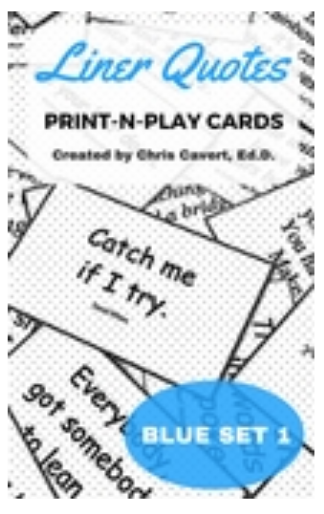|
Before I could move on with my programming thoughts a familiar question showed up for me: What else could I use in the snowy tundra instead of index cards? Easy answer. Vinyl numbered spots (commonly known as livestock tags - see the picture to the right). I pulled out my sets and chose one where the numbers didn't show through the back. I was ready to try Numbers Shuffle for the first time.
|
Stack your numbered spots (vinyl in damp weather or paper index cards on dry days) in numerical order with number one on the top so you are ready to use the numbers you need. You will also want a timing device of some sort, like a hand-held stopwatch or a stopwatch located on your Smartphone.
Directions
- Circle up your group and quickly count how many participants you have.
- Grab the numbered spots you need equal to the number of participants (keep the extras off to the side - if there are late arrivals, you can easily give them numbers so they can play).
- Give half the stack to the person standing on your left and the other half to the person on your right - tell both people to, "Take one and pass the rest to the person next to you." (It's okay if participants see the number on the spot. And you will not need a number.)
- When everyone has a number ask them all to line up into a new circle in numerical order with the number one person standing to your left and the highest number to your right.
- When the new circle is formed, present the challenge something like this:
In a moment but not yet, I'm going to ask you to shuffle all the numbers in the group. To shuffle you will first hold your numbered spot with the number facing towards the ground so as you are exchanging the spots no one can see the numbers. You'll keep shuffling until you hear me say, GO!. At that time, I will start my stopwatch.
After you hear that magic word, GO!, you will first look at the number you are holding, second, get this number back to the person it belongs to while at the same time be on the lookout for your number, then third, once you have your number reform your numerically ordered circle in relation to where I'm standing - number one is to my left then around sequentially to the highest number to my right. When the numerically ordered circle is reformed, I will stop the time. Do you have any questions about the challenge? [Answer questions here.] Okay, listen for that magic word - you may begin the shuffle.
Give the shuffle a good 30 to 45 seconds before you shout the magic word. (I like to move around during the shuffle to end up in a different spot from where we first started. I do this every round.)
After stopping the time - when the circle has reformed - check for accuracy. Have everyone hold her/his number up so everyone can see if they are in order. If there is a mistake the time will be declared invalid.
Typically, I give my groups three or four attempts to see how fast they can complete the challenge. Before each attempt I either give my groups unlimited planning time (this can be good or not so good) during all-day programs or I limit the time (e.g., 3 minutes to plan) when I'm facilitating shorted programs.
This one is easy explain, participants will not need to listen to me for very long. There isn't a lot of waiting to play and each attempt takes less than 90 seconds. Participants are mixing and mingling around talking to each other and they pretty much have to help one another in order to get the numbered spots in the hands of the right people. Then, I always play until there is some notable improvement so we can talk about identifying problems, solving problems and team improvement - and what we 'did' to improve.
Number Shuffle or any of the other versions have been a good way for me to start off a program day. Groups can see what is possible and are ready for more.
Links to the Other Versions
Name Card Scramble (The idea that started it all.)
Name Card Return (Part 1 of a What? & Why? three-part series - super deep dive.)
Values Shuffle (A version I tried with a group working on norming.)
Have fun out there! Let us know how it goes.
Chris Cavert, Ed.D.









 RSS Feed
RSS Feed